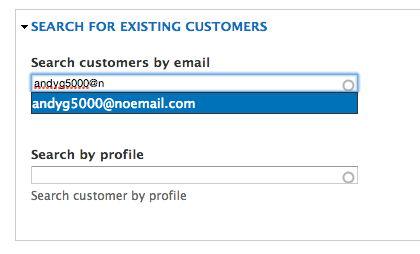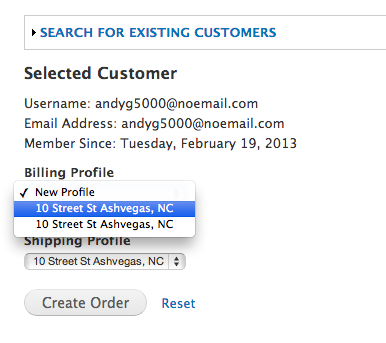I’m a web developer. I enjoy what I do. A lot.
About 7 years ago, I discovered what it was that I was missing in web development. Drupal.
Drupal is open source software maintained and developed by a community of over 1,000,000 users and developers. (That’s taken directly from Drupal’s website.)
The first Drupal website I put together was a combination of downloading modules, hacking themes, and generally having no idea what I was doing. But it was fun and I was learning what Drupal was. I recall it was just after Drupal 6 was launched. Seems like it was eons ago.
I wish I could go back and yell at the developer I was then for not doing things a better way. Knowing what I know now, my development skills have dramatically improved and I try very hard to stay within the Drupal Best Practices documentation.
Here are some of my tips for being a successful Drupal developer.
Don’t hack core!
This is basically one of the cardinal rules of Drupal development. Hacking core files of Drupal means updating the site will likely break everything. Also hacking modules means that you won’t be able to update them for bug fixes and troubleshooting.
Learn to use the Drupal API
Eventually, you’ll find the need to write functions and do crazy things with your code. The fun part of developing for Drupal is that the API rocks. I mean, really rocks. There are so many cool functions and code snippets for doing things that would otherwise take you forever to write/code yourself. Learn to use things like node_load(), path_to_theme(), node_save(). These three functions are simple but extremely useful. Use case: I recently wrote a module that went through 20,000 nodes for a Drupal website, retrieved data from another website using their API, brought that data back to my project site, then saved the data using node_save(). Doing that by hand, no. It would take weeks on top of weeks. The script I wrote took 90 seconds. Boom. Drupal Magic.
Contribute to the Drupal Community
Whether you contribute code, testing, or bug reports, Drupal thrives off the community. This is something that I failed at for a while. I simply felt that I wasn’t good enough to contribute to discussions or code. However, simply reporting a bug is useful to the community. If you’ve used a module and had an issue with it’s basic usage, report it. Search for the bug you’re reporting first. It could be that it’s a duplicate issue. Please please please search for the issue first. Don’t be a lazy Googler.
Learn Version Control
This may be one of the most valuable takeaways from this post. Version control isn’t just used by the Drupal community, it’s used by coders everywhere for a wide variety of things. Personally, I use Git for version control, but there are many other options. Some people find it very daunting to do things in Command Line or Terminal (that thing that looks like MS-Dos for those that don’t know). It’s really very simple though. If you learn version control, you’re value to a company will go up significantly. I promise. Here are a few sites that might help:
- Easy Guide – http://rogerdudler.github.io/git-guide/
- Try Git – https://try.github.io/levels/1/challenges/1
- GitHub – https://github.com/
Learn helpful shortcuts
For a long long time, when I setup a Drupal website, there was a lot of downloading, decompressing files, placing modules and themes in the correct place, then finally starting to work on the project. Enter Drush. If you are using Command Line/Terminal, then Drush will be your best friend. Using Drush, you can download Drupal, setup themes and install them, download modules and install them, update Drupal, backup you site, and a slew of other things using very basic and easy commands. It’s cut down my setup time to just a few minutes. Read up on Drush here.
Setup local development environments
Gone are the days where you had to have a server to work on a website. There are some very easy to setup tools that you can use to setup your site on your desktop or laptop so you can work on it anywhere without the internet. I once worked on a local website for 2 hours while my train was stuck in a cellular dead zone in Virginia. Try using MAMP to setup your local environment so you can get coding and work on your sites from anywhere.
Attend conferences and meetups
Speaking for myself, I learned Drupal development from a hand full of very gifted developers over a long period of time. It never hurts to find a developer willing to share some knowledge with you. The best resource to learn Drupal is by going to conferences and meetups to hear people speak on a wide variety of topics. Maybe you can even take some training. Drupal Con is a big one. I’ve never had the opportunity to go, but something tells me that I will soon. My favorite conference was the 2011 Do It With Drupal (DIWD) conference by Lullabot. My mind was blown about every 60 seconds. I came back understanding more about development skills, Drupal development, and the future of the web. Here are some highlights from that conference.
Don’t be closed minded to other technologies
I love Drupal. We know this. But I also love WordPress. I can hear some developers now: What’s that you say! Traitor! Burn him!
Calm down people. Being a web developer doesn’t mean I only want to do things my way or I only want to use one technology to do things. You need to learn when and where specific software and tools will work best. If someone says to me “I want a website, but I’m not that good at computers, but I do want to write blog post” then I’m likely gonna recommend WordPress. But if someone comes to me and said, “I want a custom website where I can load in videos, pictures, and other content. I also want to sell things, etc etc” then I’d likely recommend Drupal.
Having said that, there are other options outside of Drupal and WordPress that I’ve also used from time to time. Flat-file CMS’ are popping up everywhere. they are lightweight and easy to setup. One of my favorites is GetSimple. Another one is Pico.
Hopefully this will help someone figure out what they need to learn to be more successful at Drupal development. As always, feel free to contact me if you have any questions. Except for haters. You guys can jump in front of a bus.

